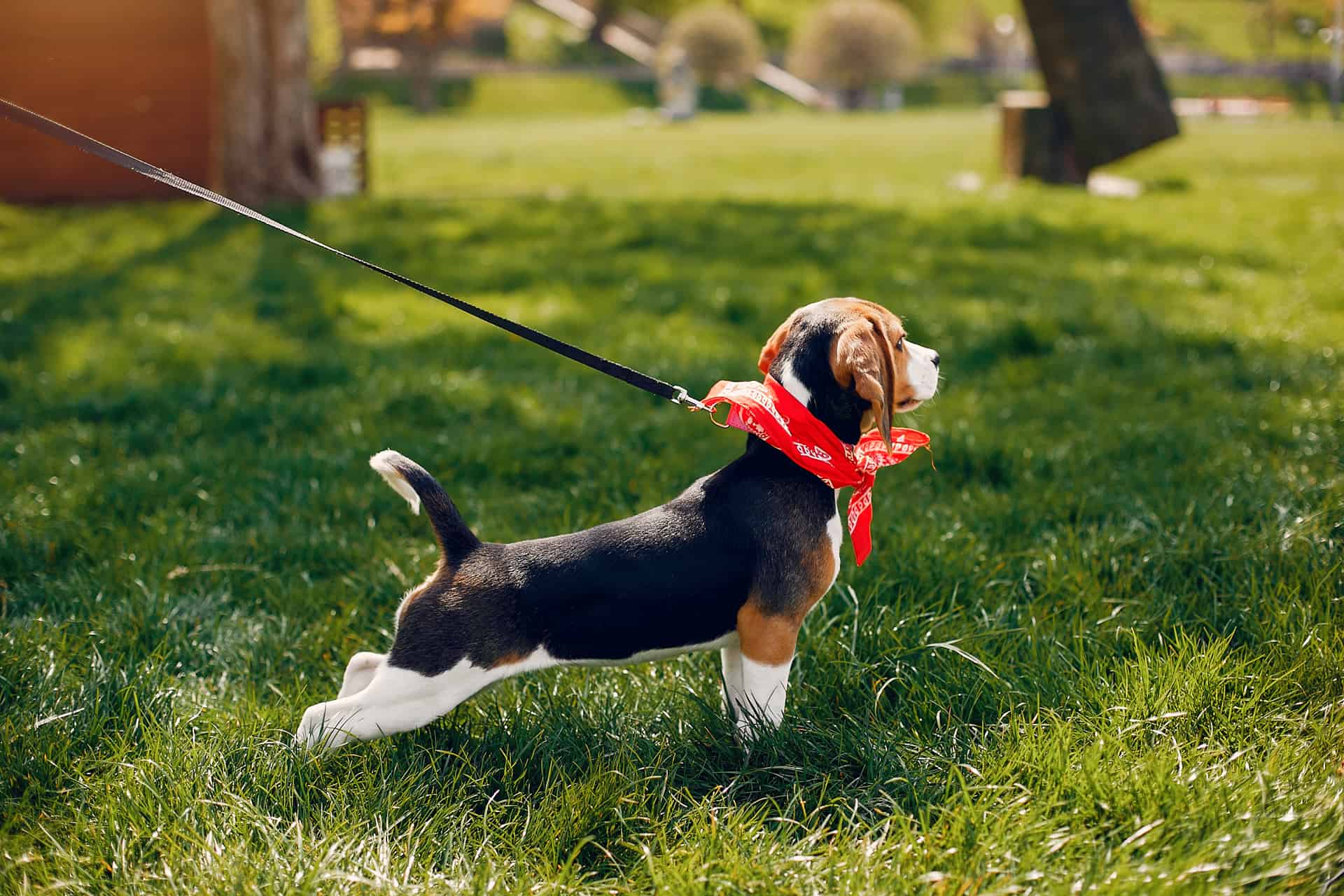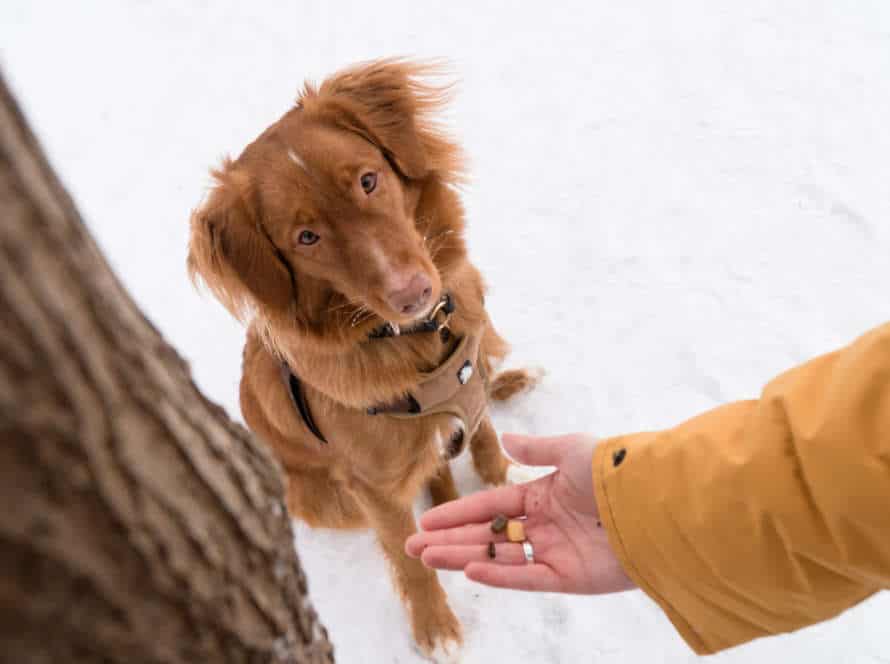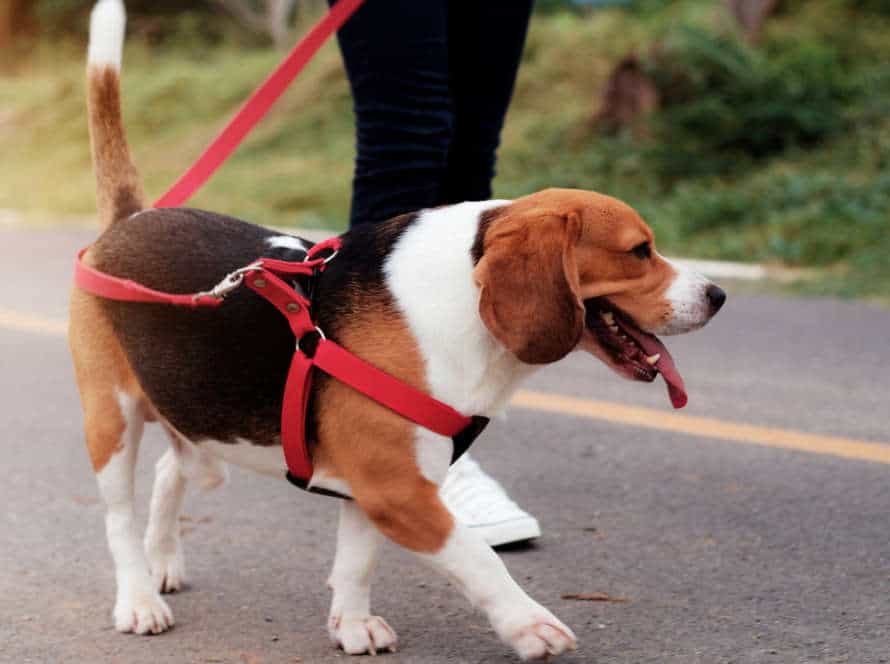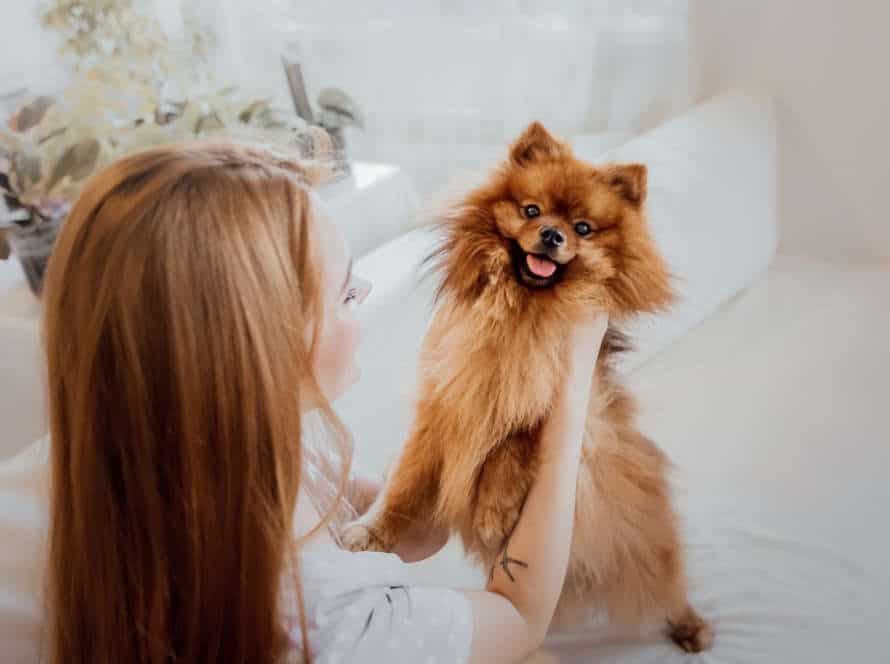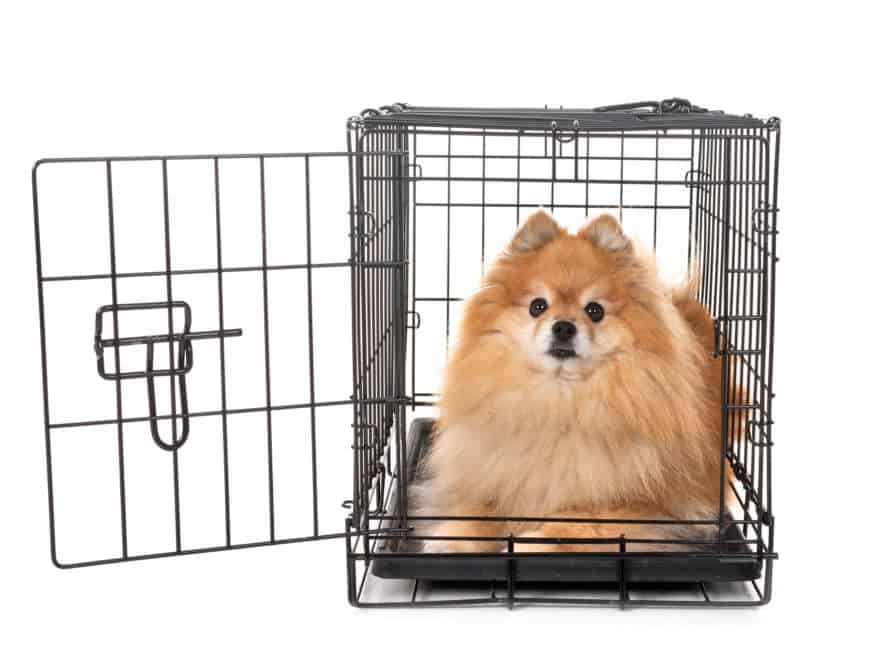Preparing Your Puppy for the Leash
Ready to start leash training your pup? It’s an important part of their education. A leash is also useful for taking your pup out and about.
Begin leash training early, so they can adjust. This guide will help make the process safe and fun. Here’s how:
- Start by putting the leash on your pup for short periods of time.
- Encourage your pup to walk with you using treats and positive reinforcement.
- Practice walking in quiet, low-distraction areas before moving to busier spaces.
- Don’t forget to reward good behavior with treats and praise.
- Gradually increase the length of walks and the amount of time spent on the leash.
- Remember to always supervise your pup on the leash to ensure their safety.
Choosing the Right Time to Start
Introducing a pup to a leash is important for training. It’s key to pick the right time, though. Here are factors to think about:
- Age: Puppies should be 8 weeks or older.
- Socialization: Socializing your pup before the leash is crucial. They should be comfy with people and other dogs. This will help them feel secure when you take them out for a walk.
- Size: The size and breed of the puppy are significant. Smaller breeds could be scared by larger leashes, so choose an appropriate lightweight one.
- Health: Make sure your pup is healthy and free from injury before introducing the leash.
Always watch your pup and use a gentle, positive approach when introducing the leash. Pro tip: Give your pup treats for good leash behavior and positive reinforcement.
Getting Your Puppy Accustomed to a Collar
Introducing your pup to a collar is very important for leash training. Here’s how to get them used to it:
- Introduce the collar slowly – let your pup sniff it and get familiar with it.
- Show them it’s nothing to be scared of – reward them with a treat when they come close.
- When they feel comfortable, put the collar on and attach a leash. Let them wear it in the house for short periods.
- Make sure it fits properly, so they don’t get hurt.
- Practice walking indoors before going outdoors.
Following these steps, your pup will soon be comfortable with their collar and ready for leash training!
Practicing Basic Commands
It’s key to do some pre-practice of simple commands before introducing your pup to a leash. Here are some of them:
- ‘Sit’ – this will assist in putting on the leash and deter them from pulling.
- ‘Stay’ – to keep your pup in place, while walking.
- ‘Come’ – so you can call your pup back if they spook or if you need to dodge any blockages.
By practising these commands, you’ll find your pup more obedient and prepared for leash training.
Introducing the Leash
Introducing your puppy to the leash? Start with trust. Be patient and reward them. Here’s the plan: Step-by-Step instructions.
- Ensure your pup has a good experience.
- Take time.
- Positive reinforcement.
- Safety and enjoyment are key.
Ready to get leashing!
Start with Short Sessions
Introducing your pup to the leash is key in their training. Don’t overwhelm them with long walks right away. Start short to get them used to it. Here’s a guide:
- Put the collar on while they’re eating or playing to get them familiar with it.
- Attach the leash and let them drag it around the house, but stay close.
- Pick up the leash and follow them around the house.
- Gradually increase the duration and distance of the walks, rewarding when they behave.
Pro tip: Use positivity, not force. That way, the leash-walking experience will be enjoyable for them.
Letting Your Puppy Sniff the Leash
Introduce your puppy to the leash by letting them sniff it! Here’s how:
- Let your pup explore the leash. Reward them for good behaviour.
- Attach the leash to the collar or harness and let them walk around indoors or in a safe, enclosed area.
- Gradually take them for short walks outside. Keep encouraging them.
- Be patient and consistent with leash training. Every pup is different!
Attaching the Leash to the Collar
Training your puppy to go on walks with a leash is important. Here’s a step-by-step guide on how to do it!
- Place the leash on the ground and let your pup sniff it and get acquainted.
- Attach the leash to the collar while they are wearing it. Reward them with treats and praises.
- Let your puppy wear the leash in the house while you watch them.
- Practice walking with the leash indoors, rewarding them with treats and praises.
- When your pup is comfortable, take them for short walks outside. Gradually increase the length of the walk as they get more used to it.
Remember: go slow and reward positive behavior with treats and praises, making it an enjoyable experience for your furry buddy!
Teaching Loose Leash Walking
It’s essential to teach your pup how to walk on a leash. This helps with obedience and safety. Make it a positive experience! This guide will show you how to introduce your puppy to the leash and teach them to walk nicely. Step-by-step. Have fun!
Start Indoors First
If you’re teaching your pup to walk with a leash for the first time, it’s best to start indoors. Here’s a simple guide:
- Let your pup sniff and explore the leash.
- Hold the leash and let them walk around you, no pulling or tugging. Offer treats and praise for good behavior.
- Go for short walks with your pup and reward them for staying by your side.
- Gradually transition to walking outside.
Always use positive reinforcement and never punish your pup. With patience and practice, they’ll become a pro!
Move to Outdoor Areas
Outdoor leash walking training is essential for your pup’s behavior. Here are some tips to follow:
- Begin in an undisturbed outdoor space: your backyard or a calm park.
- Train your pup in this area until he is used to it and responds correctly.
- To increase distractions, move to more active places with more people, animals etc.
- Reward him with treats, compliments and positive reinforcement for good behavior.
- Be patient and keep practicing; soon your pup will be able to walk on a leash confidently in any environment.
Reinforcing Good Leash Behavior
Reinforcing good leash behavior is key for having a perfectly-trained pup. You want them to walk without tugging the leash. This is called loose leash walking. To help teach your pup to do this, follow these steps:
- Introduce the leash gradually. Let your pup smell and play with it.
- Put the leash on them and let them walk indoors to become used to it.
- Reward with treats and praise when they stay close and don’t pull.
- When they start pulling, stop walking. Only start again when they’re calm.
- Repeat this process, increasing the duration and distance of the walks.
- Be patient and consistent. Your pup will learn that loose leash walking is expected.
Pro Tip: Use yummy treats like chicken or cheese to motivate and reinforce good leash behavior.
Troubleshooting Common Problems
It’s both fun and challenging to introduce a pup to a leash. If yours is struggling, a few common issues can make the process easier. Here are tips to help your pooch become more comfortable with the leash. Troubleshoot away!
Leash Lunging and Pulling
Leash lunging and pulling can be a challenge for pet owners taking their doggies for a walk. It can be hard for both the dog and the person. Training and patience can help fix these behaviours.
Here are a few tips to try:
- Teach your pup to walk with a loose leash. Stop when they pull and only start again when the leash is no longer taut.
- Use positivity to reward your pup for good behaviour and discourage lunging and pulling. Treats and praise work!
- Identify triggers, such as other dogs or humans, that cause your pup to lunge or pull. Reduce exposure to these triggers when training.
- Start in a low-distraction area before moving to more populated spots.
Introducing your pup to the leash is key to preventing lunging and pulling. Start by getting your pup used to wearing a collar or harness. Then, introduce the leash gradually, let your pup lead the way, and follow. Always use positive reinforcement techniques to encourage good behaviour and build a bond with your furry friend.
Fear of the Leash
Introducing your pup to a leash can be tricky. Fear of leashes is common, but with patience and the right approach, you can help your pup get over it. Here is a guide:
- Start inside. Let your puppy sniff and explore the leash.
- Attach the leash to the collar and let pup drag it around for short times.
- Gently tug the leash and get pup to come towards you.
- Take pup outside and keep encouraging pup to come towards you while on the leash.
- Do this daily, gradually increasing the length of the walks and the time spent on the leash.
Reward pup’s progress with plenty of praise and treats. With consistent training and encouragement, pup will soon love walks with a leash.
Refusal to Walk on the Leash
Don’t worry if your pup won’t walk on the leash. It’s common and can be fixed with a few simple steps.
First, introduce them to the leash in your home. Let them smell and investigate it. This will make them more familiar with it and reduce fear.
Next, attach the leash to the collar and let them wear it around the house. This will help them get used to it.
When they’re okay with that, take them outside. Start in a quiet area with no distractions. This will help them focus.
Walk with them, using treats to encourage them. Rewards make it more positive and reinforce good behavior.
Practice regularly, increasing the distance and adding distractions as they become more comfortable. Before you know it, they’ll be walking fine on the leash.
Graduating to Longer Walks
Once your puppy is used to being on a leash, you can start taking them on walks. Start small – like one block – and slowly increase the length of the walk as your pup gets more comfortable. Here are some ideas to help your puppy enjoy longer leash walks:
- Bring along some treats to reward good behavior.
- Change up your walking route to keep it interesting for your pup.
- Let your puppy stop and sniff around – it’s important for their mental stimulation.
- Have plenty of water on hand for both you and your pup to stay hydrated.
Increasing the Duration of Walks
Gradually increase the length of your dog’s walks for improved fitness and health. Here’s some advice:
- Start near home with shorter walks, adding a few minutes more each day or week.
- Allow rests and hydration before continuing.
- As your pup’s stamina grows, increase the distance and speed.
- Watch out for signs of exhaustion, like panting, lagging, or reluctance to move.
- Introduce pups to leashes indoors or in a safe area with treats, praise and short walks.
Remember: Walking not only helps your pup’s physical health, but also reduces stress and anxiety.
Encouraging Your Puppy to Explore
Exploring and discovering the world is an important part of a puppy’s development. So, it’s vital to encourage them to explore from early on. To help your pup feel comfy and secure, you must gradually increase the length of walks and introduce them to the leash.
Here are some tips to consider:
- Take your pup out for short walks initially. Let them get used to the sights, smells, and sounds of the neighborhood.
- Start with a few minutes of walking and gradually lengthen the walks.
- Reward good behavior with treats and positive affirmations.
- Stay patient and calm; puppies need time to learn and adjust.
- Introduce the leash to your pup gradually. Let them sniff and become accustomed to it.
- Persist consistently and your pup will eventually be comfortable and confident exploring the world.
Keeping Your Puppy Safe on Walks
Introducing your pup to the leash is the first step to keep ’em safe on walks. Here’s a how-to guide to help you out.
Start by leaving the leash and collar in a spot your pup can see, not something they feel threatened by. Let your pup sniff it.
Put the collar on your pup, but without the leash. Do this for a few minutes, then increase the time.
Once your pup is comfy with the collar, attach the leash and let them drag it around, with close supervision.
When your pup is used to the leash, take ’em for short walks in a quiet area. Reward them with treats and praise for good behaviour.
Gradually increase the length of the walks, but always watch for signs of stress or tiring.
Don’t forget to bring water and poop bags on your walks. Don’t ever leave your pup alone.
Frequently Asked Questions
1. How do I get my puppy used to the leash?
The first step is to introduce the leash to your puppy slowly. Start by letting them sniff it and then gradually attach it to their collar for short periods of time while indoors. Once they are comfortable with the leash, begin taking them for short walks around your home.
2. When is the best time to introduce a puppy to the leash?
The best time to introduce a puppy to the leash is when they are between 8 and 12 weeks old, as this is a critical socialization period. However, it’s never too late to introduce your puppy to the leash, just take things slowly and be patient with them.
3. How long should I leave the leash on my puppy?
When first introducing the leash to your puppy, it’s important to only leave it on for short periods of time, such as 10-15 minutes. You can gradually increase the time as they become more comfortable with it.
4. What kind of leash should I use?
A lightweight leash that is 4-6 feet long and made of nylon or leather is recommended. Avoid retractable leashes as they can be difficult to control and may cause your puppy to pull.
5. What if my puppy pulls on the leash?
If your puppy pulls on the leash, stop walking and wait for them to calm down before continuing. Do not yank or jerk the leash, as this can cause injury and damage trust. Instead, use positive reinforcement techniques like treats and praise to encourage good behavior.
6. How can I make the leash more comfortable for my puppy?
Make sure the collar or harness is properly fitted and not too tight, as this can cause discomfort and injury. You can also add padding to the collar or harness to make it more comfortable for your puppy.

